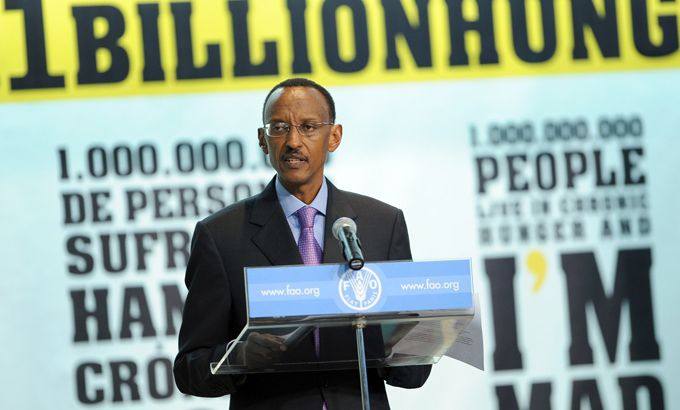
Rwanda reinvented
What is driving the African nation’s remarkable recovery – government planning or foreign aid and guilty consciences?
The 1994 genocide killed up to 20 percent of Rwanda’s population, and displaced two million of its people. The violent episode took a heavy toll on the economy, and the health service.
But nearly two decades on from Rwanda’s darkest hour, the country is being hailed as a model for recovery and reinvention and praised as a spectacular public health success story.
|
“Rwanda has been able to develop quite an innovative relationship with the donors. Rwanda as a government has quite unique approach, a strongly nationally-owned approach to development which is a thing that we don’t often see in Africa …. Donors don’t just feel guilty and therefore they pour money into Rwanda. They also recognise that the Rwandan government has a strong vision for development.“ – Danielle Beswick, a lecturer and specialist on Rwanda at the University of Birmingham |
A study by health experts in the US says Rwanda has improved the quality of life in almost all walks of life. One year after the genocide life expectancy stood at 30 years; latest figures show it has now almost doubled to 59.
By comparison, Ethiopia has an average life expectancy of 54 and in the conflict-stricken Democratic Republic of Congo, it is 49.
In 1994, 78 percent of the population in Rwanda lived below the poverty line. By 2010 that figure had dropped to 45 percent, and in the five years up to 2010, one million Rwandans were lifted out of poverty.
Rwanda is also winning the fight against infectious diseases.
Deaths from HIV, TB and malaria have each dropped by around 80 percent over the past 10 years.
For tuberculosis, Rwanda has a rate of around 128 sufferers per 100,000 people. In Ethiopia it is close to 400 people, and in the DRC it is well over 500 for every 100,000 people.
|
“The vision and the framework first needs to be in place for aid to make sense…. For the country to reach the level that it’s at now, I would say what has contributed is the shared vision …. It’s quite a mixed information that’s coming out of Rwanda, that’s a fact. But [what we are seeing] is a very inclusive development in Rwanda“ – Selam Hailemichael, Care International in Norway |
But a contrasting picture is painted about healthcare in Rwanda in another report which was published by the foundation set up by Paul Rusesabagina. He was the real life hero of the acclaimed film Hotel Rwanda who saved the lives of more than 1,200 people during the Rwandan genocide.
That report points to limited health care for people living in the countryside, with the vast majority of health professionals based in urban areas.
It accuses President Paul Kagame of planning to introduce a sterilisation programme to reduce the number of poor Hutus. And it talks of widespread torture, starvation and suffocation in prisons, with little medical attention.
The African nation has emerged from a failed state, to break the cycle of poverty, dispair and disease. But is the success story down to government planning or foreign aid and guilty consciences? And can Rwanda’s story be a model for another country in Africa?
Inside Story, with presenter Dareen Abughaida, is joined by Agnes Binagwaho, the Rwandan health minister; Selam Hailemichael, the programme coordinator for Care International in Norway; Patrick Noack, the co-editor of the book, Rwanda Fast Forward, which is looking at the country’s prospects in the coming years; and Danielle Beswick, a lecturer and specialist on Rwanda at the University of Birmingham.
|
“I would stress that guilt of the international community has played a significant role. One is to provide support and aid, but I think the other side also is to perhaps not to shine such a strong light on some of the more challenging, more difficult situations that have presented themselves in Rwanda in the last several years. So I think it is fair to say that in some cases perhaps Rwanda hasn’t been exposed in the same scrutiny as some of the other countries have. And there has been somewhat more freedom to move than would have been in other countries.” Patrick Noack, the co-editor of Rwanda Fast Forward |
THE 1994 GENOCIDE:
- An estimated 800,000 Rwandans were slaughtered in the space of just 100 days, between April and June of 1994
- Most of the dead were minority Tutsis while those responsible were mainly majority Hutus
- The violence was sparked by the death of Rwanda’s Hutu president, Juvenal Habyarimana
- Tutsis were blamed for shooting down his plane
- The Tutsi-led Rwandan Patriotic Front eventually captured the capital Kigali, sending an estimated two million Hutus fleeing to Zaire, now the Democratic Republic of Congo.